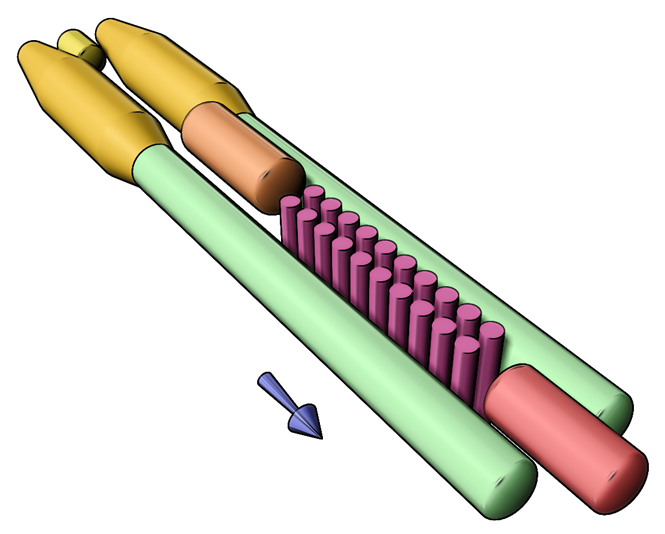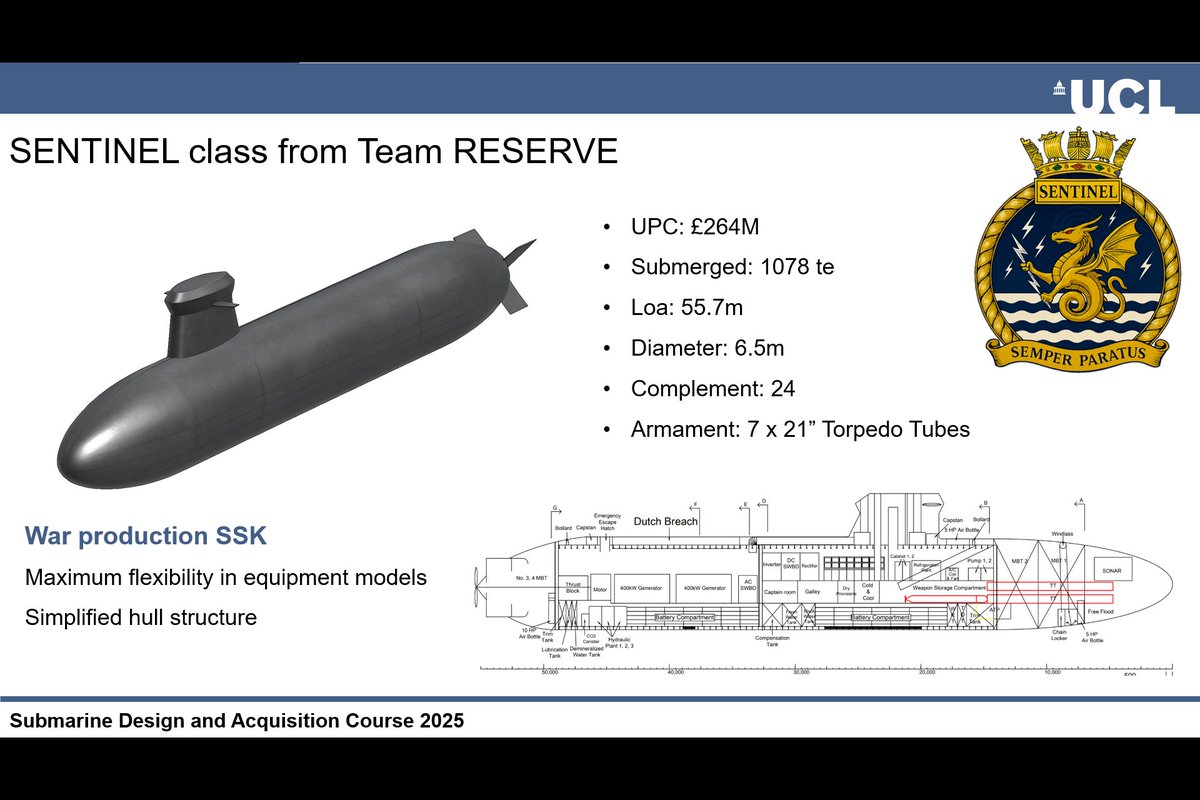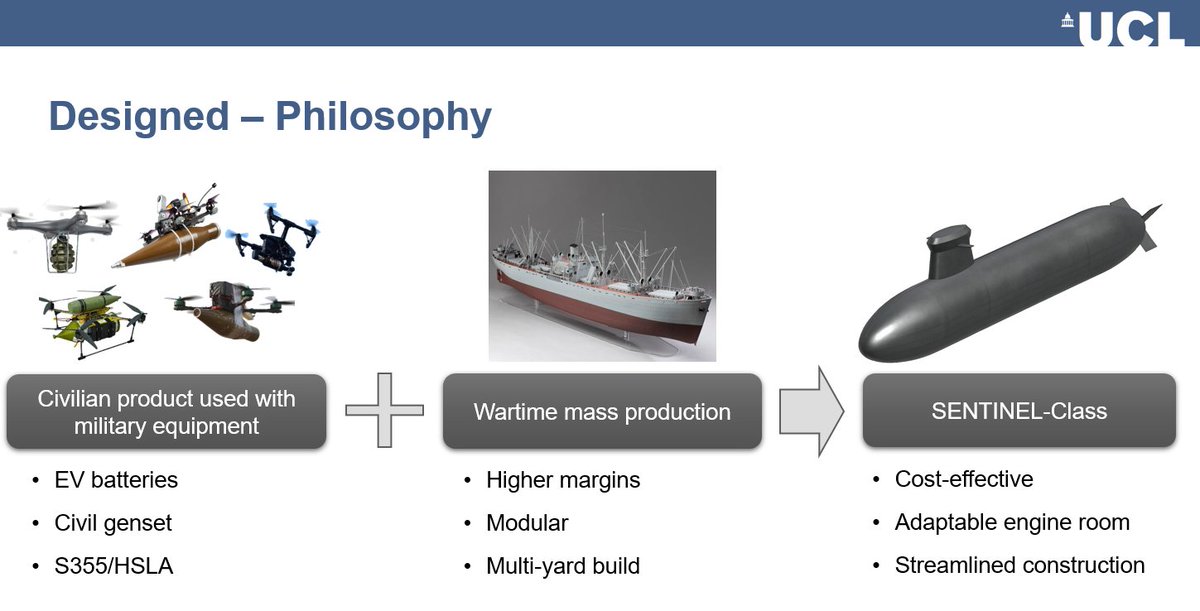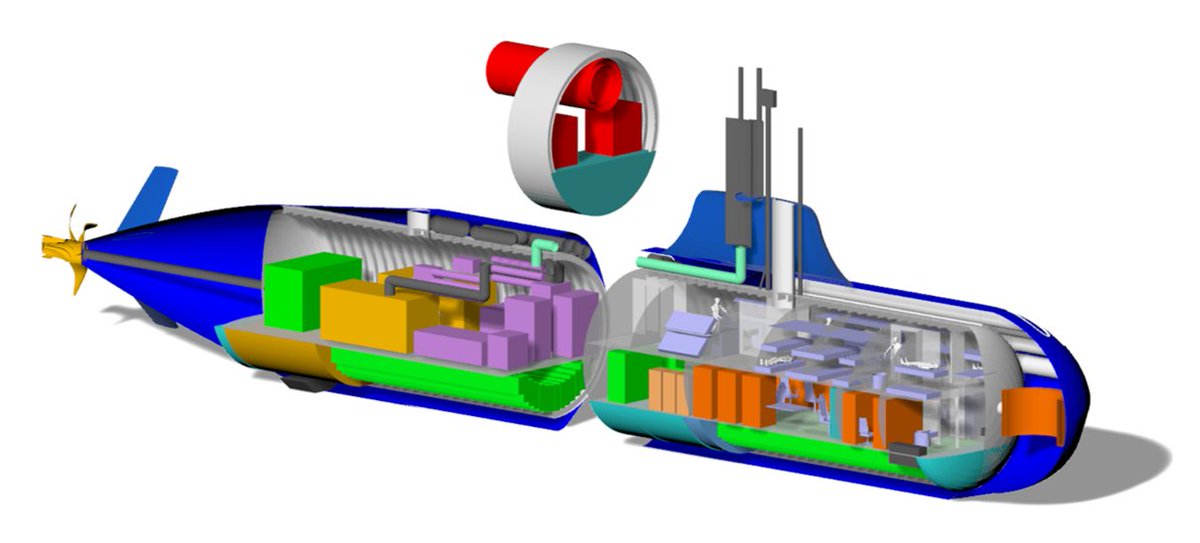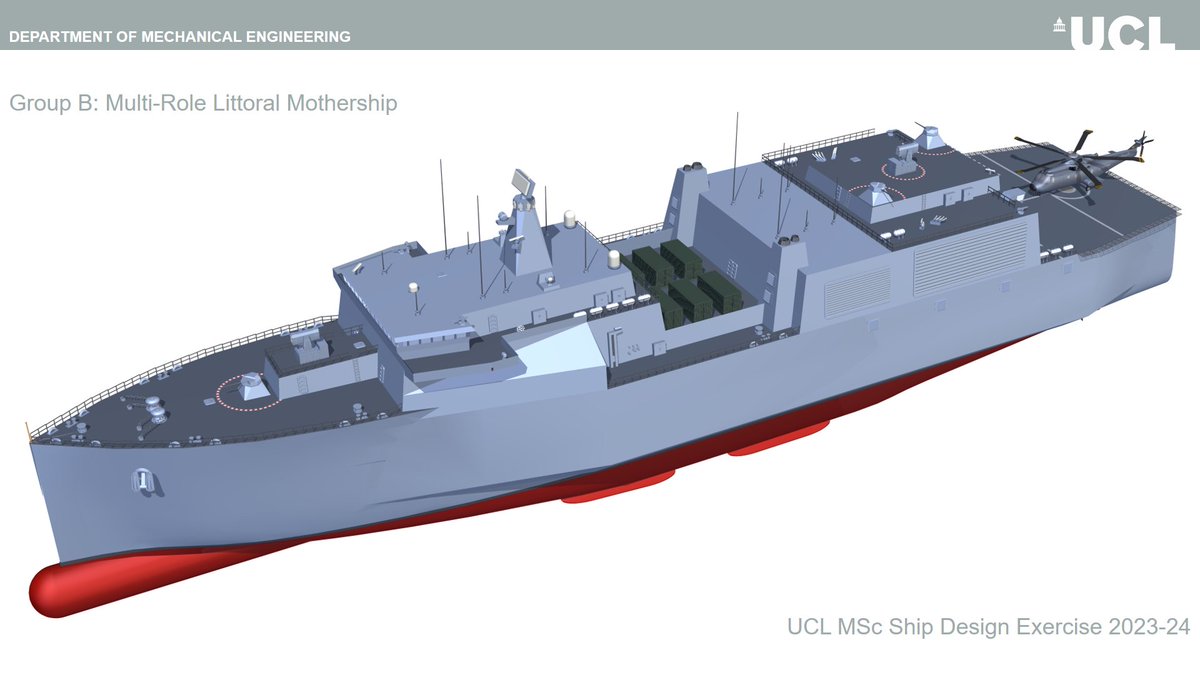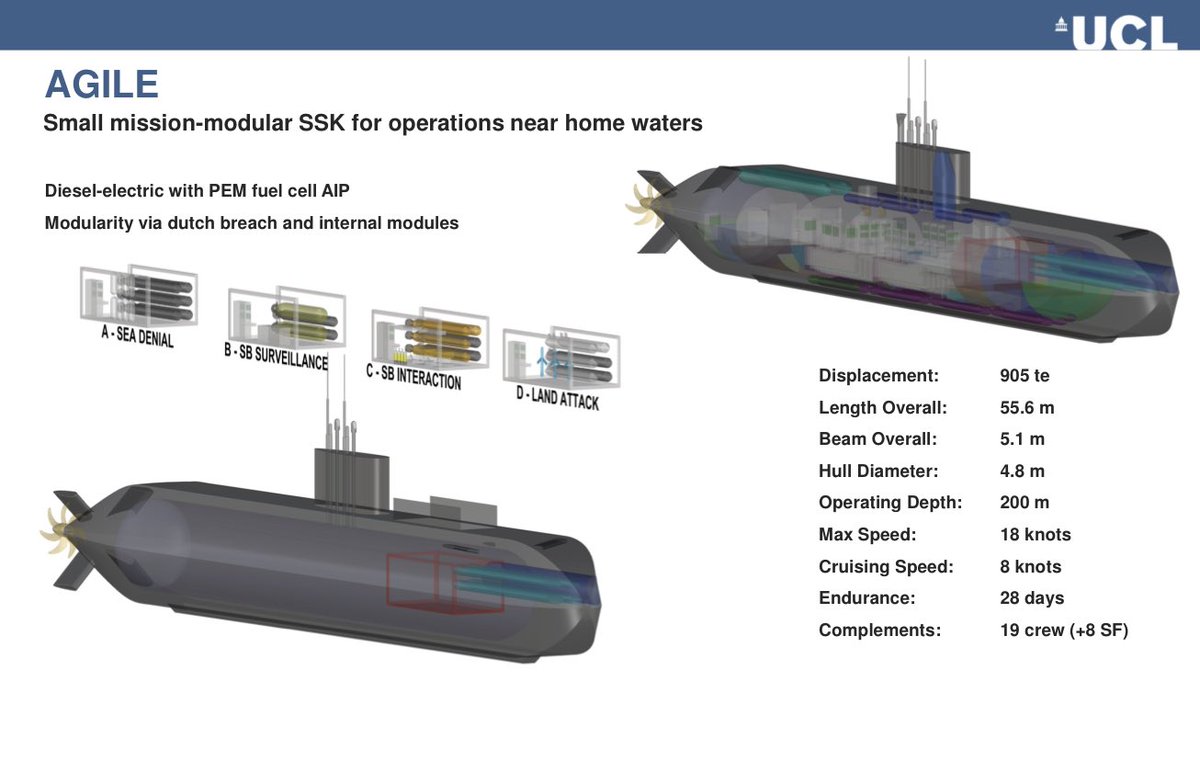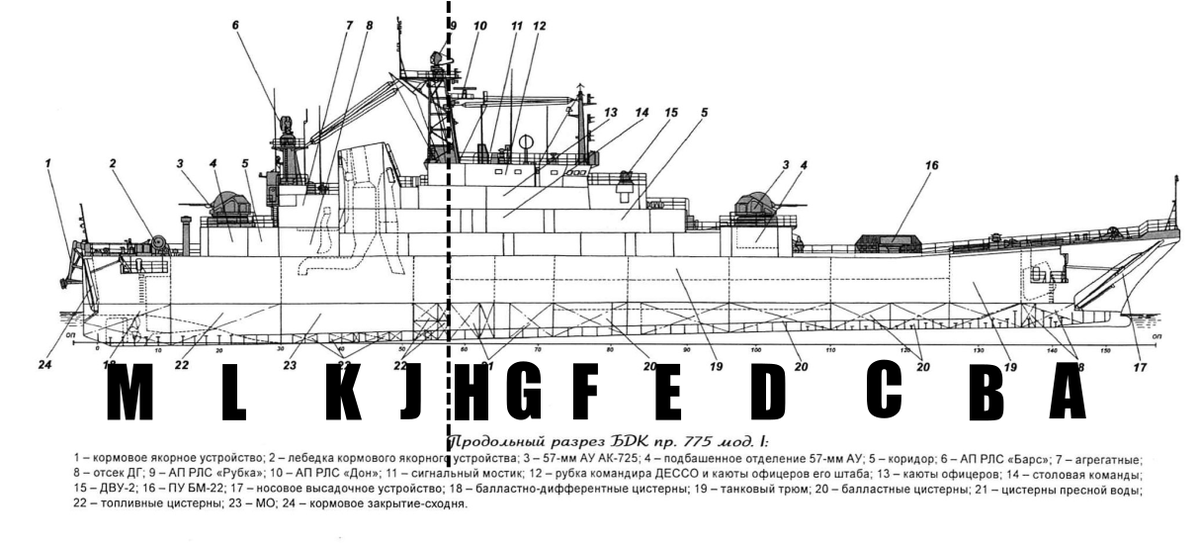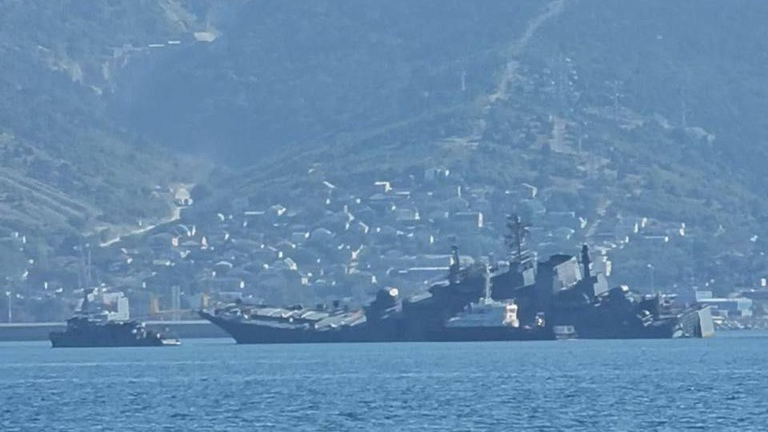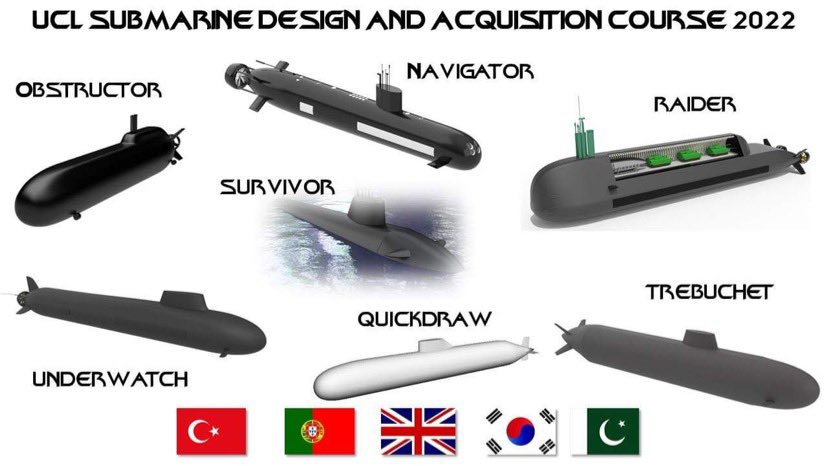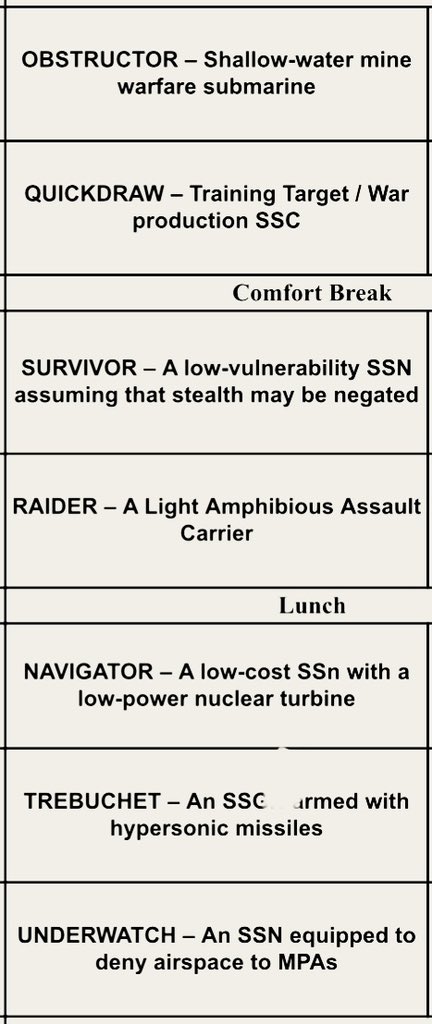Let's see if you can guess the submarine, from the little illustrations I use in my lecture today to show alternative pressure hull topologies. Red = weapons, control, Yellow = machinery, Green = accommodation, Orange = aux machinery. 1/5 
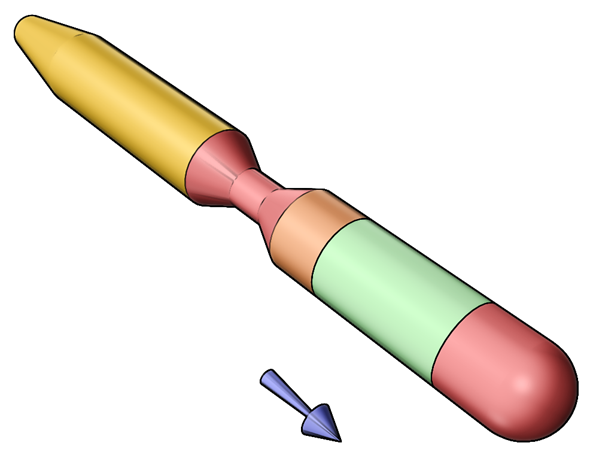
• • •
Missing some Tweet in this thread? You can try to
force a refresh




